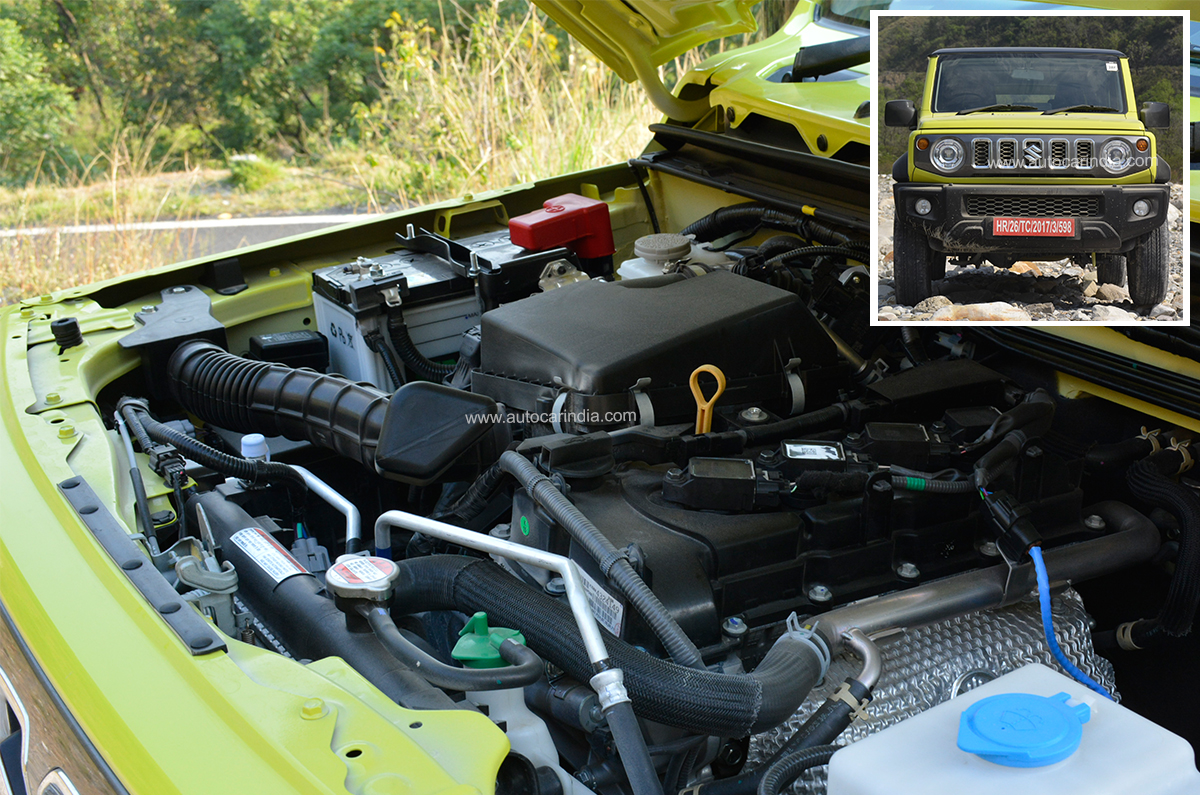
Barring the Ciaz, the Jimny is the only model in the entire Maruti line-up to continue with the K15B.
The freshly baked 5-door Maruti Suzuki Jimny is ready for its launch on June 7, 2023, and the carmaker has already garnered around 30,000 bookings for this lifestyle off-roader. This Mahindra Thar and Force Gurkha competitor is powered by a 105hp, 1.5-litre four-cylinder K15B petrol engine that’s mated to either a 5-speed manual or a 4-speed automatic transmission, which channels power to all four wheels via Suzuki’s All Grip Pro hardware. And to keep a check on fuel consumption as well as emissions, it features an automatic engine stop-start with both transmission options.
We tell why Maruti opted for the older K15B petrol engine for the Jimny rather than the K15C petrol from its current portfolio.
- Jimny 5-door shares engine with 3-door version
- Meets all emissions norms in India
- Boosterjet 1.0 turbo petrol wont be seen on the Jimny
Why Maruti Suzuki chose the K15B engine
The primary reason for Maruti to opt for the relatively older K15B petrol engine with the 5-speed manual and old-school 4-speed automatic transmission is that the 3-door Jimny is already sold in international markets with this powertrain. India being one of the manufacturing and export hubs for the Jimny has achieved significant levels of localisation, hence it is economically viable to have a common powertrain between the 3-door and 5-door versions to simplify production processes, and also help the company achieve economies of scale.
Interestingly, between 2019 and 2022, the same K15B petrol engine powered multiple Maruti cars like the Ertiga, XL6, Vitara Brezza, S-Cross and Ciaz, as well as Toyota’s Urban Cruiser. However, to meet stricter emissions norms and CAFE targets, Maruti replaced this engine with a more fuel-efficient and cleaner K15C petrol unit, which is currently available on many Maruti and Toyota models.
While the aforementioned cars are front-wheel driven with the engine mounted transversely, to make the K15C petrol engine fit in the Jimny, it would have to be longitudinally mounted. Sources tell us that Suzuki (global) wasn’t willing to re-engineer it for the Jimny as the benefits are too few compared to the outgoing K15B motor.
Additionally, as per sources, the company will target the markets where K15B continues to meet all the necessary regulations, and believes that its stronger bottom-end grunt is more suited to the Jimny’s off-road application than the K15C, which focuses on maximising fuel efficiency.
Maruti Suzuki Boosterjet unlikely for the Jimny
We’ve also learnt that the possibility of the 1.0-litre Boosterjet turbo-petrol making its way into the Jimny is ruled out. The advantage of the smaller turbo-petrol engine having a capacity of less than 1,200cc would make the 5-door Jimny fall in a lower tax bracket due to its sub-4-metre length, and this could make it more affordable than the 1.5-litre version. But at the moment, the company has no plans to replace the K15B with the 1.0-litre turbo unit.
However, the engine, which made its debut in the Fronx, will go on to power multiple offerings in the coming months.
Also read:
Maruti Suzuki Jimny launch on June 7
Maruti Suzuki 5-door Jimny fuel efficiency figures revealed
